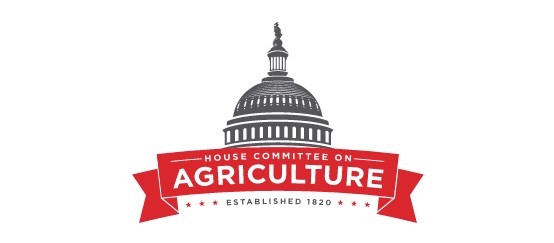USDA, Microsoft Innovation Challenge Winners
Open Data from USDA, Microsoft Cloud Technology Strengthen Food Supply Through “Innovation Challenge” Winners
Agriculture Secretary Tom Vilsack and Microsoft officials announced the winners of the USDA, Microsoft Innovation Challenge late last month in which contestants used USDA agriculture production open data to develop online tools that can help make the American food supply more resilient in the face of climate change.
“In yet another example of how public and private resources can be leveraged together to address significant global concerns, the winners of the USDA-Microsoft Innovation Challenge have used open government data to create an impressive array of innovative tools to help food producers and our communities prepare for the impacts of climate change and ensure our nation’s ability to provide plentiful, affordable food,” said Agriculture Secretary Tom Vilsack. “For more than 100 years, USDA has compiled data on the farm economy, production, and the health of crops around the country, and it is exciting to see such modern, useful tools spring from these information sources.”
The Challenge was created in support of the President’s Climate Data Initiative, which aims to harness climate data in ways that will increase the resilience of America’s food system. USDA provided contestants with more than 100 years of crop and climate data through Microsoft Azure, Microsoft’s cloud computing platform.
“Combining the advantages of cloud computing resources with the government’s desire to provide open access to public data is likely to transform scientific research and business innovation,” said Dr. Daron G. Green, deputy managing director of Microsoft Research. “Microsoft’s partnership with the USDA evidences how public-private partnership can stimulate new applications, explore novel scenarios and, in this case, work towards a more resilient and sustainable food production.”
A total of $63,000 in cash and prizes were awarded, with winners selected from more than 346 registrants and 33 submissions from around the world.
The award recipients and their projects, are:
- Grand Prize, Open Source Application Award, and Best Visualization in Time or Space Award recipient: Farm Plenty, submitted by George Lee of San Francisco, Calif. This application allows farmers to analyze USDA data about crops grown within five kilometers of their farms to make informed decisions about their own crop choices.
- Second Prize and Open Source Application Award recipient: Green Pastures, submitted by Khyati Majmudar of Mumbai, India. This comprehensive dashboard interface allows a farmer to visualize production, economic, livestock, and commodity data from NASS, ERS, ARMS, and other sources at scales from national to local, including information on farmers’ markets.
- Third Prize recipient: What’s Local, submitted by Benjamin Wellington of Landscape Metrics LLC in Brooklyn, N.Y. This tool analyzes the resources that are required to produce agricultural outputs by using data from the Census of Agriculture in a way that allows urban population centers to connect with farmers in their area.
- Honorable Mention: Open Source Application Award, and Best Student-Made Award recipient: Farm Profit Calculator, submitted by Fernando Napier and Matt Pedersen of Lincoln, Neb. Farmers can use this mobile phone application to compare their input costs (fertilizer, seed, fuel, etc.) to regional averages, and find financial efficiencies where their costs are above the norm.

- Honorable Mention recipient: Croptrends, submitted by Chaiyawut Lertvichaivoravit and Ta Chiraphadhanakul of Thousand Eyes in San Francisco. This useful tool can be used for viewing spatial and temporal trends in crop production and yield by county for the entire United States by using NASS data.
- Popular Choice Award recipient: VAIS, submitted by Ken Moini of Thallo Tech in Nashville, Tenn. This tool uses NASS data for the entire United States to provide a unique approach to visualizing crowd-sourced pricing data.
- Large Organization Recognition Award recipient: Farmed, submitted by Bryan Tower of Applied Technical Systems in Silverdale, Wash. This tool allows farmers to view crop conditions in their area by using VegScape data from NASS combined with local weather data.
USDA is an active founding member of the Global Data Partnership through the memberships of both the U.S. Government Open Data and the Global Open Data for Agriculture and Nutrition (GODAN) initiatives. USDA is helping pave the way for coordinating global efforts to make agriculture and nutrition data open. USDA’s Open Data Catalog is the authoritative source of publicly available USDA data.
Since 2009, USDA has invested in and advanced innovative and transformative initiatives to solve societal challenges and ensure the long-term viability of agriculture. USDA’s integrated research, education, and extension programs, supporting the best and brightest scientists and extension personnel, have resulted user-inspired, groundbreaking discoveries that are combating childhood obesity, improving and sustaining rural economic growth, addressing water availability issues, increasing food production, finding new sources of energy, mitigating climate variability, and ensuring food safety. To learn more about USDA’s impact on agricultural science, visit www.usda.gov/results.









